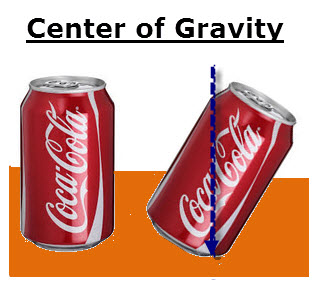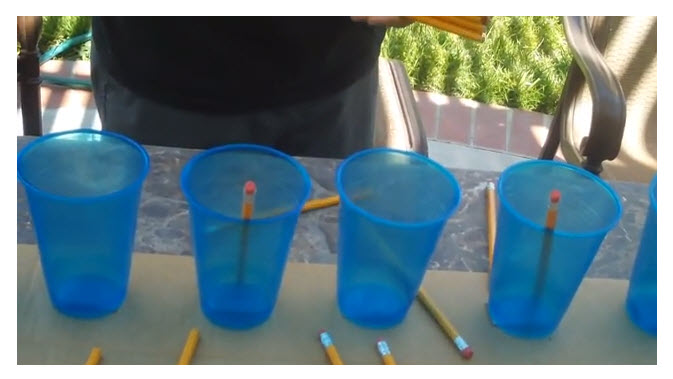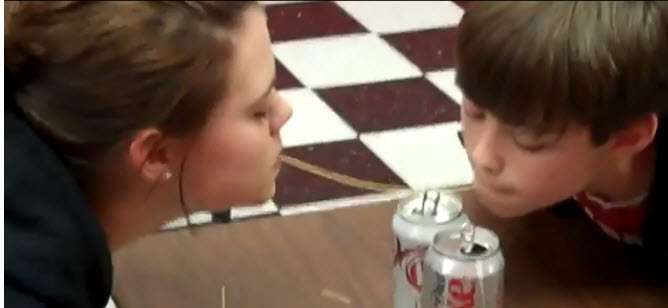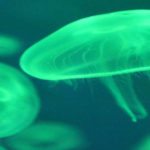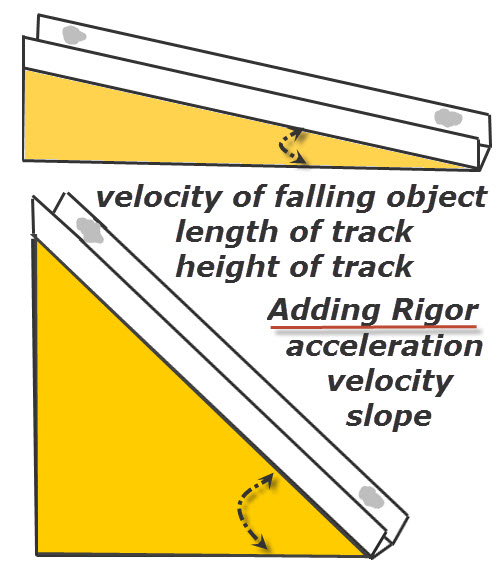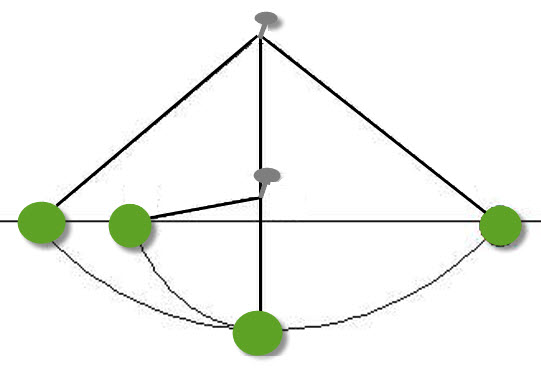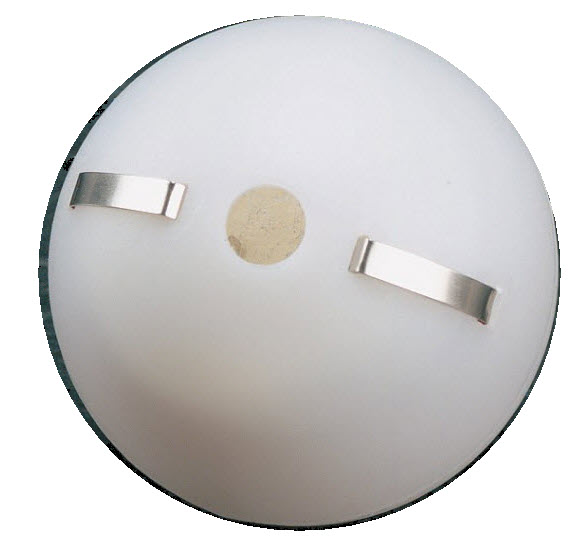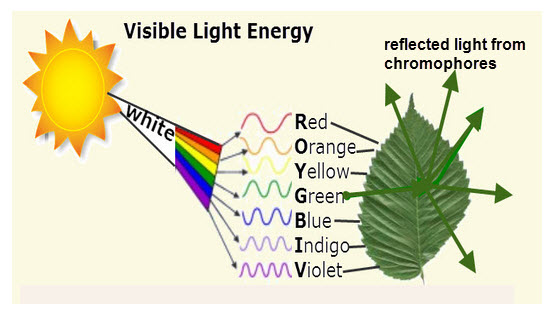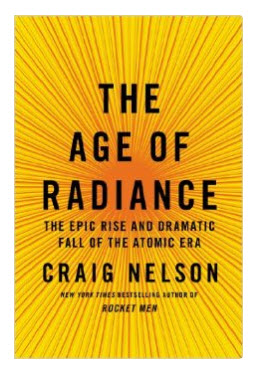Vision depends on a small part of the Electromagnetic Spectrum Called Visible Light. The only type of light energy that you can visually perceive is called visual light. Visual light can be broken into seven parts, each part with a different amount of energy, and each amount of energy is perceived as a different color. […]
Center of Gravity: Balancing Soda Can
The center of gravity (center of mass) is the point on an object that when supported on that spot, the object will balance. A line through the center of gravity of an object is always vertical. Note that the leaning soda can in the diagram is balanced where the center of gravity of the can […]
Pencils Bounced Into Cups
A pencil can be bounced so that it traces out the path of a projectile resulting in the pencil landing in a glass as shown in the video below. In the video, pencils are bounced by dropping them on their eraser end. Depending on how the pencils are dropped, the trajectory path of some of […]
Spaghatti’s Structural Load
Using Games to Teach Science Process Skills The photo shows two kids transporting an empty soda can using an uncooked piece of spaghetti as a pole to carry the can. The kids are participating in a game taken from the TV game show, “Minute-to-Win” it. The objective of the game is for two people to […]
Luminescence
Luminescence Is Cold Light Cold light is visible light produced by processes other than heating. Light sticks are an example of cold light, which is produced when chemicals are mixed together and the energy released is in the form of visible light. The firefly in the photo gives off light that like the light stick […]
Testing Galileo’s Ramp Hypothesis
Wall Coaster by Janice VanCleave www.scienceprojectideasforkids.com Objectives Students will: study the motion of freely falling objects; student the motion of objects on a ramp at different slopes, angles, and heights. Background The Italian scientist Galilei Galileo (1554-1642) did not have accurate timers. Thus Galileo could not with accuracy test his hypothesis about the motion […]
Galileo’s Pendulum Experiment
Galileo Investigated Ways to Slow Acceleration Due to Gravity The Italian scientists Galilei Galileo (1564-1642) ) established experimentally that heavy objects fall at practically the same rate. It was obvious to this scientists that a feather and heavy stone did not fall at the same acceleration. But, heavy objects of different masses appeared to fall […]
Energy: Electric, Light, Sound
Preview in new tab A “Mystery Ball” is used to demonstrates three types of energy: electric energy light energy sound energy Objectives: 1. To describe the physical properties of the energy ball.2. To identify the the types of energy produced by the Energy Ball: electric energy, light energy, and sound energy.3. To describe the difference […]
What Are Chromophores?
Leaves are green because they contain chlorophyll, a pigment whose molecules absorb all the light energy in the visible light spectrum except the parts producing the green color of the leaf, which is reflected. Chromophore is the name of the chlorophyll functional group (aka moiety) of the chlorophyll molecule.Organic pigments (chemicals that have color) have […]
The Age of Radiance
Shoe Store X-Ray Machine I could be the girl looking through the eye pieces of this x-ray machine. It seems like only yesterday that with much excitement I looked through an X-ray machine exactly like the one shown in the photo. The machine was in the shoe department and it really did show an X-ray […]
- « Previous Page
- 1
- 2
- 3
- 4
- …
- 16
- Next Page »

